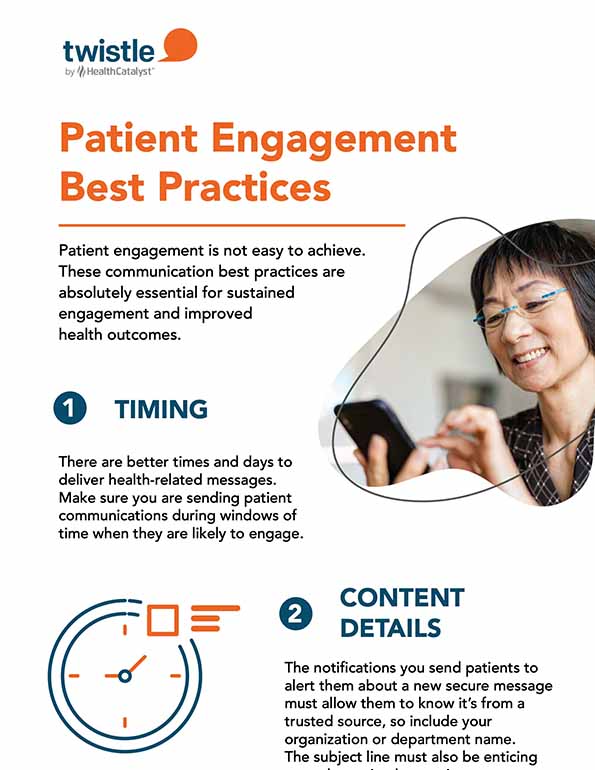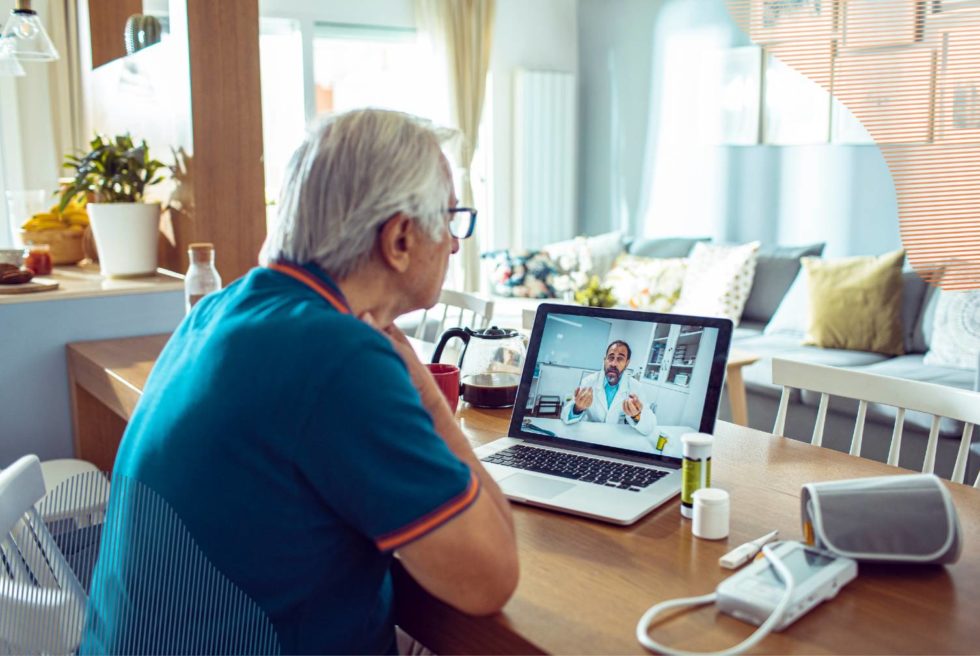As healthcare increasingly digitizes, organizations must prioritize the patient experience to create a seamless digital health journey. Drivers of patient experience range from the use of empathy in outreach to the technology that delivers information to a patient. Engagement software and strategies optimize patient activation when they follow the following best practices:
1. Simplify communication channels.
2. Consider the timing of communication.
3. Optimize content.
4. Determine the cadence.
5. Consider the tone.
6. Leverage data to make improvements.



The COVID-19 pandemic has accelerated the adoption of digital health tools, such as telehealth appointments, and lowered reimbursement-related barriers to virtual care. As more healthcare interactions continue to move to a virtual format, there’s a new emphasis on the patient experience and creating a seamless digital health journey. Developing effective strategies and technologies that facilitate digital patient engagement and improve outcomes rests in data analysis, iteration, and optimization.
Throughout Twistle™ by Health Catalyst’s 10-year history, the organization has generated meaningful activation data to confidently recommend optimal patient engagement strategies and communication pathways. Twistle partners with life sciences companies, health systems, and payers to improve health outcomes and quality of life for patients.
Twistle has discovered that the optimal patient experience incorporates a wide array of factors, ranging from the use of empathy to the technology that delivers information to a patient. The following elements have emerged as essential in evaluating software and strategies to optimize patient engagement:
According to the Pew Research Center, 85 percent of Americans have a smartphone, and 97 percent own a cell phone of some kind. Many patients, however, don’t want to download an app or remember access instructions and passwords for patient portals. In response, keeping patient communication simple via SMS text messages increases engagement.
Organizations should consider whether they’re communicating at times and intervals when their patients are most likely to engage. According to Twistle’s experience, messages delivered at certain times of day have consistently higher patient engagement rates. Conversely, there are times to avoid when designing a communication cadence.
Not every patient understands medical terminology or has the same health literacy level. Keeping messages short with easy-to-understand wording and descriptive subject lines ensures that patients can follow instructions and respond to check-ins. Optimal guidance reaches the patient in small, digestible messages delivered just when the patient needs the information and can act on it.
The number and timing of messages the patient engagement software sends must match the patient’s needs across their treatment journey. Just-in-time messages eliminate the risk of alert fatigue, whether a patient is preparing to start a new treatment or has been on treatment for a longer period.
Twistle has found that patient activation is optimal when it provides more than treatment information alone. Sometimes patients need a gentle nudge or a friendly reminder that they’re not alone and someone’s looking out for them. Encouraging messages alleviate patient anxiety and further nurture the patient relationship and build loyalty and trust.
To iterate and improve the digital patient experience, organizations should also analyze outreach and engagement behaviors. What content worked and what fell flat? Which pathways had the perfect number of touch points, and which missed the mark? These data-driven decisions will lead to true optimization and improved patient activation.

Learn the key best practices for engaging patients across the product lifecycle.
Would you like to learn more about this topic? Here are some articles we suggest: